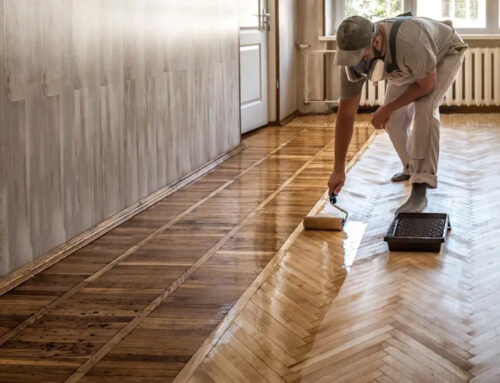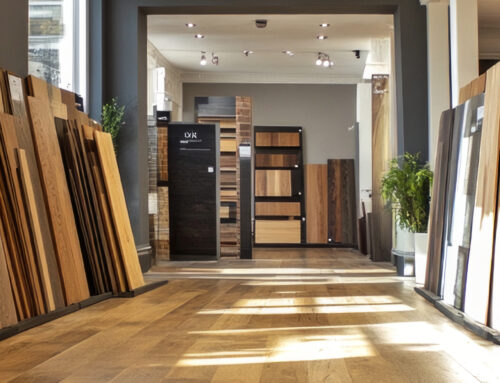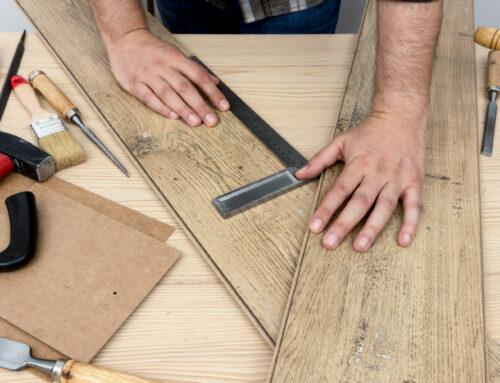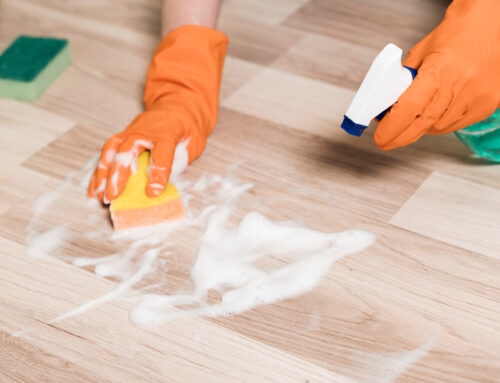High-traffic residential areas require durable hardwood flooring that maintains aesthetic appeal under constant use. Entryways endure frequent foot traffic and outdoor contaminants, kitchens face impact from dropped objects and spills, while hallways experience continuous wear from daily household movement.
Hardwood flooring remains popular for both its visual appeal and resilience when appropriately selected. While concerns about scratching and denting exist, specific wood species demonstrate remarkable durability against daily wear. Wood varieties differ significantly in hardness and moisture resistance, with finish selection substantially affecting performance longevity.
The decision between solid and engineered hardwood should be based on specific application requirements. Installation quality significantly impacts durability, comparable to the importance of species selection.
The Janka hardness scale provides standardized measurements of wood density and wear resistance, though comprehensive flooring selection should incorporate multiple performance factors beyond this single metric. Move forward in the article to know the best options to pick from!
Hardwood Floors That Survive Your Home’s Busiest Spaces
Floors in busy homes face constant challenges. That hallway leading to the kitchen? The entryway where shoes pile up? These spaces demand flooring that can handle real-world wear and tear.
Choosing the right hardwood means looking beyond appearances:
- Withstand countless footsteps
- Maintain beauty through daily use
- Match your home’s actual lifestyle
What Makes a Hardwood Floor Truly Durable?
- Hardness Matters: The Janka rating measures wood’s resistance to dents. For high-traffic areas, look for woods scoring 1,200 or higher on this scale.
- Grain Density and Protection: Dense grain patterns naturally protect against scratches. Maple and hickory excel at resisting everyday wear, especially with the right finish.
- Moisture Resistance: Some woods fight moisture better. White oak and teak contain tannins that help them resist water damage in challenging spaces like kitchens and entryways.
Beyond The Wood: Protective Finishes
A high-quality finish is your floor’s armor. Oil-based polyurethane creates a tough barrier. Aluminum oxide finishes can protect planks for up to 25 years.
Maintaining Your Investment
Smart homeowners go beyond material choice. Placing mats at entryways, using felt furniture pads, and maintaining consistent humidity extend floor life.
Floors are more than surfaces. They’re the backdrop to your home’s stories – from muddy soccer shoes to late-night conversations. Choose wisely, and your floors will tell your family’s tale for years to come.
What Are the Top 12 Hardwood Flooring Options for Maximum Durability?
-
Hickory: The Toughest Contender
Hickory has an impressive Janka rating of 1,820, this wood goes beyond durability to become a statement of strength. Its unique grain pattern tells a story of resilience, making it an excellent choice for spaces that experience constant footfall.
- Perfect for entryways and living rooms
- Challenging to install
-
Maple: Smooth and Resilient
Wood flooring experts appreciate maple for its exceptional performance. Its smooth grain creates a clean, contemporary look that adapts to modern interior designs.
- Janka Rating: 1,450
- Exceptional scratch resistance
- Ideal for kitchens and hallways
- Tricky to stain darker colors
- White Oak: Versatile Performer
White oak has earned its reputation as a go-to choice for homeowners who look for reliability. The natural water resistance and ability to maintain stability across different humidity levels make it a standout option.
- Janka Rating: 1,360
- Great for indoor and outdoor spaces
-
Brazilian Cherry: Luxury Durability
A premium choice for those who are looking for exceptional quality, Brazilian cherry brings both beauty and strength to any space.
- Janka Rating: 2,820
- Extremely hard
- Deepens in color over time
- Resistant to furniture wear
- Premium pricing
-
Strand-Woven Bamboo: Eco-Friendly Champion
- Janka Rating: 4,000–5,000
- Harder than most natural woods
- Sustainable material Performance meets environmental consciousness with strand-woven bamboo, offering an unparalleled combination of durability and eco-friendliness.
-
Black Walnut: Sophisticated Strength
Black walnut delivers a rich, distinctive appearance with impressive durability credentials.
- Janka Rating: 1,010
- Natural resistance to decay
- Ages beautifully with distinctive patina
- Ideal for formal spaces
-
Mesquite: Desert-Tough Flooring
Mesquite hardwood brings exceptional durability from harsh desert environments to your home.
- Janka Rating: 2,345
- Exceptional dimensional stability
- Distinctive grain patterns
- Resistant to moisture changes
-
Red Oak: Reliable Classic
Red Oak is a time-tested option that balances strength with reasonable cost.
- Janka Rating: 1,290
- Excellent staining capabilities
- Wide availability
- Good value for durability
-
Ash: Athletic Performance
Known for its use in sporting equipment, ash flooring brings that same resilience to flooring.
- Janka Rating: 1,320
- Shock-resistant properties
- Light color brightens spaces
- Good bend strength
-
Merbau: Tropical Endurance
This exotic hardwood delivers exceptional moisture resistance with premium durability.
- Janka Rating: 1,925
- Naturally resistant to termites
- Minimal expansion/contraction
- Rich, amber-to-orange hue
-
Spotted Gum: Australian Toughness
A distinctly durable option from Down Under with exceptional hardness.
- Janka Rating: 2,473
- Fire-resistant properties
- Wavy grain pattern
- Excellent for high-traffic areas
-
Ipe: Iron-Like Durability
Sometimes called “ironwood,” Ipe stands as perhaps the most durable natural hardwood option available.
- Janka Rating: 3,680
- Exceptional resistance to rot and decay
- 100+ year lifespan potential
- Naturally fire-resistant
- Premium investment cost
What Are the Best Protective Hardwood Floor Finishes for Maximum Maintenance?
Oil-Based Polyurethane
This finish enhances the wood’s natural color, and the amber glow adds depth to your flooring, making it both functional and visually appealing. Oil-based polyurethane penetrates the wood grain effectively, offering superior protection in high-traffic spaces.
- Excellent durability
- Provides a rich, warm appearance
- Requires fewer coats
- Longer drying times
Water-Based Polyurethane
It is quick-drying. Water-based Polyurethane is low in volatile organic compounds (VOCs) and offers a clear finish that maintains the wood’s true color.
Water based formulations have improved significantly, now rivaling oil-based versions in durability while delivering superior clarity that preserves the natural appearance of lighter woods.
- Rapid drying process
- Minimal yellowing over time
- Eco-friendly
- More frequent recoating is needed
You can
Hardwax Oils
For those seeking a natural, low-sheen look, hardwax oils penetrate deeply into the wood. They have a matte finish that helps easy spot repairs.
These finishes have both natural oils and waxes that bond with wood fibers. They create a protective and breathable surface that enhances grain definition.
- Deep wood penetration
- Natural matte appearance
- Simple spot repair capabilities
- Requires regular maintenance
Aluminum Oxide
Aluminum oxide finishes are the marathon runners of floor coatings. These engineered finishes incorporate aluminum oxide crystals within multiple layers of UV-cured urethane, creating an exceptionally durable surface.
- Found in pre-finished planks
- Extremely scratch-resistant
- Up to 25 years of durability
- Cannot be applied on-site
Maintaining Your Hardwood Investment
Protecting your floors is a daily commitment. Smart maintenance extends beyond the initial finish choice and implementation. Regular cleaning with appropriate tools prevents microscopic particles from abrading the surface, while strategic protection measures minimize direct damage.
Consider microfiber dust mops or vacuums with specialized hardwood attachments for the most effective cleaning without risking surface scratches.
Daily cleaning routines should focus on:
- Sweep or vacuum to remove dirt
- Use soft-bristled tools
- Prevent scratches from loose debris
Beyond regular cleaning, strategic protection significantly extends floor life. Furniture pads prevent concentrated pressure points that can dent even the hardest woods. Entrance mats trap outdoor debris that would otherwise act as sandpaper underfoot. Window treatments protect against UV exposure that can fade finishes and change wood coloration over time.
Humidity Control
Wood breathes with the environment. Maintaining stable indoor humidity prevents warping, cracking, and unnecessary wear. Seasonal changes require attention, as winter heating systems can dramatically reduce indoor humidity while summer months may introduce excess moisture. Wood’s cellular structure expands and contracts with these changes, potentially causing gaps between boards or unwanted cupping when extreme.
Effective humidity management includes:
- Maintaining ideal humidity between 35-55%
- Using humidifiers or dehumidifiers as needed
- Monitoring seasonal changes and adjusting accordingly
Ending Note
Your floors endure constant use. They support every footstep, dropped toy, and sliding furniture leg in your home. Consider your home’s actual patterns of use when deciding. A busy household with children, pets, and frequent gatherings demands tougher types and more durable finishes than quieter spaces. The activity level in different rooms requires using varied woods throughout your home.
At Rustic Wood Floor Supply, we offer premium hardwood flooring solutions designed for life’s busiest spaces. Our curated selection features the most durable wood species that stand up to daily wear while maintaining their natural beauty. Our expert team can help you choose the perfect combination of wood type and protective finish for your high-traffic areas.
Visit our showroom today to discover flooring that tells your family’s story for generations to come. Quality hardwood that lives as hard as you do.
Frequently Asked Questions About Hardwood Flooring
How Often Should I Replace My Hardwood Floors?
Regular refinishing every 7-10 years can significantly extend their lifespan. Professional inspection every 5 years helps catch potential issues early.
Can Hardwood Floors Increase My Home’s Resale Value?
Potential buyers view them as a premium feature. Well-maintained, neutral-toned hardwood floors are particularly attractive to home buyers.
What’s the Best Way to Prevent Scratches from Furniture?
Consider area rugs in high-friction areas. Trim pet nails regularly to minimize potential damage.
Are Hardwood Floors Good for Homes with Pets?
Place rugs in high-traffic pet areas. Regular cleaning helps prevent scratches and damage.
How Does Climate Change Affect Hardwood Floors?
Allow for small expansion gaps during installation to prevent warping.
Author Profile
- I have worked in hardwood flooring for the last 8 years. Use to run a company of residential crews as well as a company with gym flooring. If you need floor installation or refinishing help, I should have an answer or at least get you in the right direction.
Latest entries
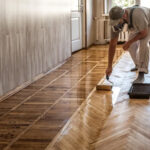 FlooringDecember 10, 2025Wood Floor Restoration in Atlanta: What Affects the Cost
FlooringDecember 10, 2025Wood Floor Restoration in Atlanta: What Affects the Cost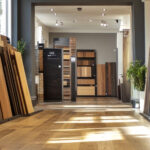 FlooringDecember 8, 2025Top 6 Wholesale Hardwood Flooring Solutions for Your Home & Office – Boise, ID
FlooringDecember 8, 2025Top 6 Wholesale Hardwood Flooring Solutions for Your Home & Office – Boise, ID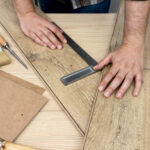 FlooringNovember 25, 2025What Engineered Hardwood Flooring Will Last Longest?
FlooringNovember 25, 2025What Engineered Hardwood Flooring Will Last Longest?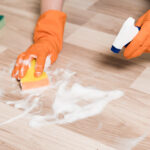 FlooringNovember 22, 2025Best Wood Floor Cleaner Liquid for Hardwood Flooring
FlooringNovember 22, 2025Best Wood Floor Cleaner Liquid for Hardwood Flooring

